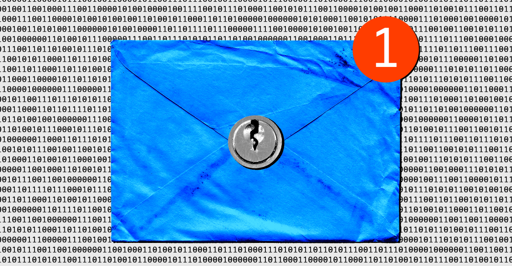Humans can be tracked with unique 'fingerprint' based on how their bodies block Wi-Fi signals
-
The Sapienza computer scientists say Wi-Fi signals offer superior surveillance potential compared to cameras because they're not affected by light conditions, can penetrate walls and other obstacles, and they're more privacy-preserving than visual images.
[…] The Rome-based researchers who proposed WhoFi claim their technique makes accurate matches on the public NTU-Fi dataset up to 95.5 percent of the time when the deep neural network uses the transformer encoding architecture.

You know, this, and the using wifi to see through walls stuff to me just immediately seemed to fall into "don't research this, it can only be used for evil".
I don't get why we bother studying these types of things.
-
I'm generally pro research, but occasionally I come across a body of research and wish I could just shut down what they're doing and rewind the clock to before that started.
There is no benefit of this for the common person. There is no end user need or product for being able to identify individuals based on their interactions with WiFi signals. The only people that benefit from this are large corporations and governments and that's from them turning it on you.
Continued research will ease widespread surveillance and mass tracking. That's not a good thing.
First - someone comes up with this. Next, privacy researchers and black/white/grey hat techies come up with methods to defeat it.
Better for surveillance tech research like this to be published out in the open than developed in some secret lab. I figure these researchers are doing more positive than negative by publishing their findings. It's not like if they didn't publish, someone else wouldn't come up with this and possibly use it clandestinely.
-
You know, this, and the using wifi to see through walls stuff to me just immediately seemed to fall into "don't research this, it can only be used for evil".
I don't get why we bother studying these types of things.
We study it because EVERYTHING can be used for good or evil.
If we'd stopped researching anything that could be used for evil we'd never have gotten into the stone age
-
The resulting image must just basically look like a shadow, I can't imagine that they're going to get much internal detail with Wi-Fi considering that my router's signal practically gets blocked by a piece of cardboard.
This research essentially amounts to, humans can be individually identified with nothing more than low quality x-rays. Well yeah, so what, you can also use visible light and in any situation where you're going to use Wi-Fi to detect someone, it's got to be easier to buy a cheap CCTV camera.
When they send a drone to your house they can make sure exactly where you are so they can shoot you through the wall.
-
We study it because EVERYTHING can be used for good or evil.
If we'd stopped researching anything that could be used for evil we'd never have gotten into the stone age
Yeah, like, why learn how to split the atom if all we can do is splode stuff. It's not like we can cure cancer or power things without emitting planet killing gasses or anything.
-
EDIT: I suppose your comment is written in a way that it's not clear whether you're saying certain frequencies absolutely require meshes of a certain size to be blocked or if you're just adding that extra detail about the design of Faraday cages for the hell of it. But...
Original comment: It doesn't have to have holes to block radiation. A continuous sheet blocks all frequencies. A mesh is just nice so we can see through the cage or allow air to pass etc.
From the page you linked: "A Faraday shield may be formed by a continuous covering of conductive material." "... if the conductor is thick enough and any holes are significantly smaller than the wavelength of the radiation."
My bad, a Farady Shield works just as well and it doesn’t need holes. But I was thinking about ways to combat this while posting and a solution involving conductive fabric was going through my head during that moment.
-
you can also take a picture of a person with a camera that senses light beams
The most primitive of physics concepts, the transmission/absorption/reflection of energy, is completely unknown to most people it would seem.
-
you might be onto something.
take a mylar square and place it somewhere random on your body every day.
Eat a piece of spinach and increase the iron in your body.
This is all beyond stupid and hysterical.
-
Eat a piece of spinach and increase the iron in your body.
This is all beyond stupid and hysterical.
instructions unclear, I have glued spinach to my skin and the rabbits won't stop chasing me.
need further instruction.
-
instructions unclear, I have glued spinach to my skin and the rabbits won't stop chasing me.
need further instruction.
Actually you've gone far enough to baffle the system.
I would say have fun frolicking with the rabbits?
-
Could be developed into a useful tool for search and rescue
You are correct because something similar has already been used
Microwaves are the same as wifi waves, these are able to detect bodies and whether the bodies are beating or not
-
Probably not.
This kind of thing relies on the fact that the emitter and environments are static, impacting the propagation of the signals in a predictable way and that each person, having a unique physique, consistently interferes with that propagation in the same way. It's a tool that reports "the interference in this room looks like the same interference observed in these past cases."
Search and rescue is a very dynamic environment, with no opportunity to establish a local baseline, and with a high likelihood that the physiological signal you are looking for has been altered (such as by broken or severed limbs).
There are some other WiFi sniffing technologies that might be more useful for S&R such as movement detection, but I'm not sure if that will work as well when the broadcaster is outside the environment (as the more rubble between the emitter and the target the weaker your signal from reflections against the rubble).
Don't think of this as being able to see through walls like with a futuristic camera, think of this as AI assisted anomaly detection in signal processing (which is exactly what the researchers are doing).
-
The Sapienza computer scientists say Wi-Fi signals offer superior surveillance potential compared to cameras because they're not affected by light conditions, can penetrate walls and other obstacles, and they're more privacy-preserving than visual images.
[…] The Rome-based researchers who proposed WhoFi claim their technique makes accurate matches on the public NTU-Fi dataset up to 95.5 percent of the time when the deep neural network uses the transformer encoding architecture.

Reminds me of the Christian Bale batman movie where he could spy on everywhere from the bat cave. Seemed so far fetched it almost ruined the movie
-
Your poo time has expired and your pay is docked. Flushing will cost 50 dollars for the next week. Get back to work
Strange. Shitting on your bosses desk is still free. Hmm. Interesting loophole.
-
Reminds me of the Christian Bale batman movie where he could spy on everywhere from the bat cave. Seemed so far fetched it almost ruined the movie
No-one suspected Bruce Wayne's "free WiFi for Gotham City" initiative
-
There is no end user need or product for being able to identify individuals based on their interactions with WiFi signals
Cat tracker
Put an airtag on the collar. Done.
-
Reminds me of the Christian Bale batman movie where he could spy on everywhere from the bat cave. Seemed so far fetched it almost ruined the movie
It was very much not even far fetched at that point. 1984 wrote about the same kind of surveillance, and at that time it would have been pretty far fetched. It was published in 1949; the video camera was only 24 years old at that point.
-
The Sapienza computer scientists say Wi-Fi signals offer superior surveillance potential compared to cameras because they're not affected by light conditions, can penetrate walls and other obstacles, and they're more privacy-preserving than visual images.
[…] The Rome-based researchers who proposed WhoFi claim their technique makes accurate matches on the public NTU-Fi dataset up to 95.5 percent of the time when the deep neural network uses the transformer encoding architecture.

Can I become obese in a day to avoid being fingerprinted?
-
Microwave based ground penetrating radar is actually different from WiFi. Also the technology referenced in the link is a motion based body locator, not an identity recognition device.
This is different technology doing different things than what the original article was talking about.
-
Can I become obese in a day to avoid being fingerprinted?
I did that over 40 years.
Doesn’t help.









